The bench press is the king of upper body exercises. But, with three bench angles to choose from, which one should you do?
Ask almost anyone what the best exercise is for building a bigger, more muscular chest, and they’ll probably say it’s the barbell bench press. While there are some exercisers who respond better to dumbbell bench presses, parallel bar dips, or machine chest presses, for most lifters, the bench press is a very productive exercise.
The bench press is beloved by bodybuilders, powerlifters, and fitness enthusiasts the world over. It’s a standing gym joke that Monday is National Chest Training Day, which invariably means there will be a queue for the bench press.
This popularity and effectiveness mean that most well-designed chest workouts include at least one bench press variation.
However, with three main types of bench press to choose from – flat, incline, and decline – a lot of exercisers are confused about which exercise is best for their needs and goals. After all, bench angle has a significant impact on how the bench press affects the target muscles.
In this article, we compare and contrast flat, incline, and decline bench presses so you can decide which one is right for you.
Level Up Your Fitness: Join our 💪 strong community in Fitness Volt Newsletter. Get daily inspiration, expert-backed workouts, nutrition tips, the latest in strength sports, and the support you need to reach your goals. Subscribe for free!
The Anatomy of a Bench Press
While you don’t need a degree in anatomy and biomechanics to build your chest with bench presses, knowing which muscles are involved in this exercise and how they work could help you choose the right variation for your needs and goals. With that in mind, these are the primary and secondary muscles involved in the flat, incline, and decline bench press.
1. Pectoralis Major
The pectoralis major, or pecs for short, is the agonist or prime mover in all types of bench press. In other words, it’s why most people do the bench press. The pecs are a large fan-shaped muscle that covers most of your chest.
Broadly speaking, the pectoralis major has four functions:
- Horizontal flexion of the shoulder joint
- Flexion of the shoulder joint
- Adduction of the shoulder joint
- Medial rotation of the shoulder joint
The pecs are made up of three groups of fibers, called heads. While all three heads work together, you can emphasize each one by altering the angle of your arm relative to your torso. That’s where flat, incline, and decline bench presses come in.
We’ll delve into which bench press does what for each head in the next part of this article. For now, these are the three heads of pectoralis major:
- Clavicular head (upper chest)
- Sternal head (mid-chest)
- Costal/abdominal head (lower chest)
So, regardless of which bench press variation you perform, all three pec heads are working. However, the angle of your arms determines which areas are doing the most work.
2. Triceps Brachii
The triceps brachii, or triceps for short, is the three-headed muscle on the back of your arm. During bench presses, the triceps extend your elbows. This makes the triceps a synergist or helper muscle.
Because of its relatively small size, the triceps is often the muscle that fails first during an intense set of bench presses. This is why, when you fail a rep, the lockout is usually where your rep grinds to a halt.
3. Anterior Deltoid
The deltoids are your outermost shoulder muscles. There are three deltoid heads: Anterior (front), medial (middle), and posterior (rear). While all three deltoid heads are active during bench presses, the anterior head works the hardest. It assists the pecs in the horizontal flexion of the shoulder joint. Like the triceps, the anterior deltoid is a synergist or helper muscle.
4. Latissimus Dorsi
While the latissimus dorsi or lats is undeniably a back muscle, it still plays a vital role in the bench press. Your lats attach your arm to your shoulder and act as a stabilizer during the bench press. It also helps you tuck your elbows into your side, which is a maneuver that powerlifters use to lift heavier weights. Lat strength can have a significant impact on bench press performance.
5. Rotator Cuff
The rotator cuff is a group of four muscles located deep within your shoulder. They are the supraspinatus, infraspinatus, teres minor, and subscapularis. While these muscles do control numerous shoulder movements, the bench press sees them mainly working as stabilizers. While you can’t see your rotator cuff, a weakness in this area can lead to shoulder pain and could hurt your bench press performance.
6. Serratus Anterior
Serratus anterior, also known as the boxer’s muscle, is so-called because it looks a little like the edge of a serrated blade. Located just to the side of your chest, this muscle helps stabilize your scapulae or shoulder blades.
Setting and keeping your shoulder blades down and back gives your pecs a more stable platform from which to work, meaning the serratus anterior is critical during the bench press
7. Pectoralis minor
The pectoralis (pec) minor is a small, triangular muscle that lies beneath the pectoralis major. Positioned close to the upper ribs, the pec minor plays a vital role in shoulder movement and stability.
While not a prime mover during the bench press, the pec minor acts as a scapular stabilizer. This helps maintain optimal shoulder positioning, providing a solid foundation for the pectoralis major to work from, ensuring that your bench press is effective and safe.
8. Biceps Brachii
The biceps brachii, commonly known simply as the biceps, is located on the front of the upper arm. While mostly known as an elbow flexor and forearm supinator, it also plays a crucial role during bench presses. Watch anyone bench pressing, and you’ll undoubtedly see their biceps flexing.
Acting as a stabilizer, the biceps are especially active during the eccentric phase of the lift, where muscle fibers are lengthening under tension. As such, it helps you lower the bar smoothly and safely to your chest. The biceps also help create a more stable environment for the pectoralis major and triceps brachii so they can function more effectively.
Summary
We’ve dropped some big anatomy and biomechanics knowledge bombs on you in this section, so here’s a concise summary of everything we’ve just covered:
| Muscle | Role | Basic Function During Bench Press |
| Pectoralis Major | Agonist | Hor. flexion, adduction, and med. rotation of the shoulder joint |
| Triceps Brachii | Synergist | Elbow extension |
| Anterior Deltoid | Synergist | Horizontal flexion of the shoulder joint |
| Latissimus Dorsi | Stabilizer | Scapular adduction and depression |
| Rotator Cuff | Stabilizer | Shoulder stabilization |
| Serratus Anterior | Stabilizer | Scapular protraction and upward rotation |
| Pectoralis Minor | Stabilizer | Scapular depression and protraction |
| Biceps Brachii | Stabilizer | Elbow flexion (control during eccentric phase) |
Now you know which muscles are involved in the bench press, let’s delve into how each variation affects these muscles differently so you know which exercise is best for your needs and goals.
The Flat Bench Press
Say “bench press” to just about anyone, and they’ll probably think you are talking about this variation – the flat barbell bench press. This is arguably the most popular version of the bench press, if not the most popular barbell exercise on the planet.
However, the bench press is a surprisingly young exercise and has only been in regular use since the late 1930s. Before that, most pressing was done standing, i.e., overhead presses. If you wanted to press on your back, you did it while lying on the floor, an exercise we now call the floor press.
As well as being an effective chest, anterior deltoid, and triceps builder, the conventional bench press is also the lift of choice in powerlifting. Many gym-bros are emotionally attached to the bench press and measure their status by how much they can bench.
How to Do the Flat Bench Press
Get more from the bench press while protecting your shoulders by following these step-by-step guidelines:
- Lie down on your bench so your eyes are directly beneath the barbell.
- Reach up and hold the bar using a slightly wider than shoulder-width grip so that your forearms will be vertical when the bar touches your chest.
- Wrap your fingers and thumbs around the bar and grip it tightly to engage the muscles in your forearms and stabilize your wrists.
- Press your glutes, upper back, and head into the bench, drive your feet into the floor, and brace your core. This will create a slight arch in your lower back.
- Unrack the bar and then hold it directly over your shoulders. Note the bar’s position relative to the ceiling; this is your start and finish point for each repetition.
- Take a big breath in, fully inflating your chest.
- Bend your arms and lower the bar toward the highest point of your chest. The descent of the bar should be controlled but not super-slow.
- As you lower the bar, tuck your elbows in towards your torso. The barbell should follow a slight curve from over your shoulders toward your sternum.
- Let the bar lightly touch your chest. Pretend a pane of glass is resting on your chest, and you mustn’t break it; touch, don’t bounce!
- Drive the bar up and off your chest and back toward your shoulders. Try to lift the bar faster than you lowered it to get past any sticking points.
- Push the bar back up to the starting position and then exhale.
- Inhale, reset your core and perform another repetition.
- On finishing your set, and with the weight held over your chest and arms fully extended, push the bar back to the catching hooks.
Pro Tips:
- Always bench press with a spotter on hand in case you are unable to complete a rep. Alternatively, do your reps in a power rack with the safety bars set just above chest height.
- Consider using wrist wraps if you are unable to keep your wrists straight.
- Do NOT do bench presses with your feet raised. This destabilizes your entire body and will limit bench press performance.
- Experiment with your grip width to determine what feels most comfortable and effective. Taller people often benefit from a wider grip.
- Try moving your feet back so they’re below your hips to create a stronger, more stable back arch. Do not move your feet once your set has begun, as doing so can lead to instability. Stop dancing the “bench press two-step!”
Muscle Activation
All bench press variations involve the same muscles, including agonists, synergists, and stabilizers. However, the angle of the bench affects how much work some of these muscles are required to do.
Scientists use electromyography to determine how active a muscle is. This device measures the electrical activity within a muscle, which indicates how hard it is contracting. However, it’s important to note that EMG is not infallible, so any results are not 100% accurate.
According to studies (1), the flat bench press primarily targets the sternal and costal heads of the pectoralis major, with moderate activation of the clavicular head and anterior deltoids. The triceps brachii also experience high activation during this exercise. This makes the flat bench press an excellent choice for overall chest development, especially for the mid and lower regions of the pectoralis major.
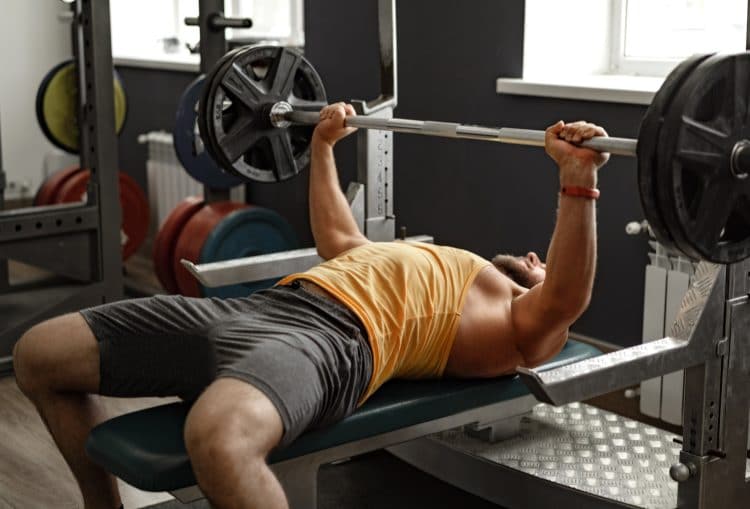
Advantages
A Comprehensive Chest Exercise – the flat barbell bench press works your entire chest while emphasizing the mid and lower pecs. As such, it provides a lot of bang for your buck, making it a very time-efficient exercise.
Versatility – you can use the flat bench press to build muscle mass, strength, or endurance. Regardless of your upper body training goal, the bench press could help you achieve it.
Accessible – most gyms have at least one bench press station, so most exercisers have access to this chest-building movement.
Relatively easy to learn – the flat barbell bench press is pretty straightforward, and most people can pick it up after a few sessions.
A competitive lift – flat barbell bench presses are the second discipline in powerlifting. As such, you can test your bench press to that of other lifters, either in competition or using comparative tables for bench press standards.
Drawbacks
Could lead to muscular imbalances – while the bench press is an excellent exercise for developing the mid and lower pec heads, the upper pecs are much less active. As such, doing too much flat bench pressing could result in imbalanced chest development.
Shoulder issues – the bench press can be hard on the shoulder joints, especially for those lifters with long arms, shallow chests, or narrow shoulders. Lowering the bar to touch your chest may also be difficult for those with flexibility issues.
Ego lifting – some lifters are obsessed with how much they can bench and either spend too much time on this exercise or perform it using loose form in an effort to lift more weight. Ego lifting can turn the bench press into an unsafe or ineffective exercise.
Flat Bench Press Alternatives
The barbell flat bench press is not the only way to train your mid/lower chest, deltoids, and triceps. Here is a list of equally effective exercises:
- Close-grip bench press
- Dumbbell bench press
- Floor press
- Machine chest press
- Push-ups (feet raised)
- Resistance band bench press
- Smith machine bench press
- Svend press
Read also: Best Bench Press Alternatives For A Big, Powerful Chest
Summary
The flat bench press is an effective exercise for targeting the sternal and costal heads of the pectoralis major, along with moderate activation of the clavicular head and anterior deltoids. It’s a versatile exercise that can be used to achieve various fitness goals, from building muscle mass to increasing strength.
While the flat bench press is an effective exercise, it also has limitations, such as the potential to cause shoulder strain and muscular imbalances. However, the bench press is considered one of the best exercises for testing upper body strength.
Related: Bench Press Standards
The Incline Bench Press
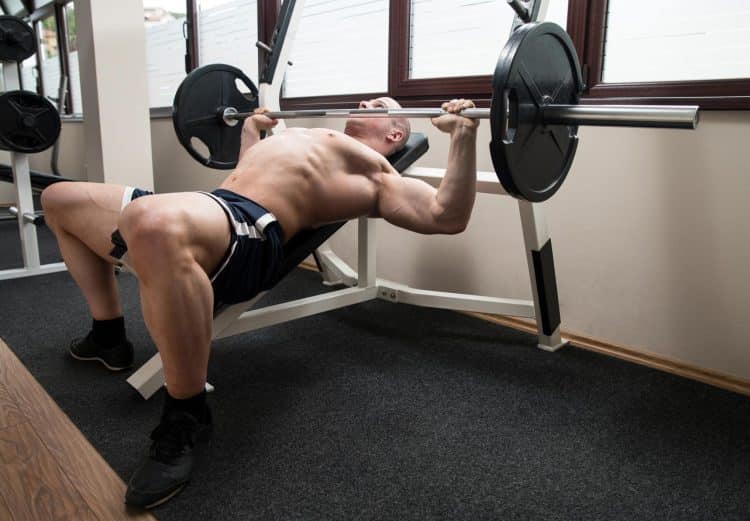
The flat bench press might be the most popular version of this exercise, but incline bench presses come a close second. Most gyms have a dedicated incline bench press station, which is typically fixed at 30 degrees. That said, using an adjustable bench, incline bench presses can be done anywhere from 15-45 degrees. The angle of the bench affects muscle activation.
How to Do the Incline Bench Press
Get more from incline bench presses by doing it correctly. Follow these step-by-step instructions for a safe, effective incline bench press workout:
- Lie back on the bench with your eyes below the bar. Plant your feet firmly on the floor.
- Grip the bar just outside shoulder width with an overhand grip. Wrap both thumbs around the bar.
- Arch your back slightly and retract your shoulders to engage your upper back.
- Lift the bar off the rack and hold it above your upper chest/shoulders.
- Inhale, tighten your core, and lower the bar to your upper chest. Do not bounce the bar off your chest.
- Pause briefly when the bar touches your body, then drive it back up forcefully until your elbows lock out. Focus on squeezing your pecs at the top.
- Reset your breath and core, and then repeat.
Pro Tips
- Flare your elbows away from your sides to increase pec engagement.
- Tuck your chin in and keep your head on the bench. Do not raise your head, as doing so puts undue stress on your neck.
- Keep your wrists straight throughout.
- Use a wider grip to increase the range of motion at your shoulders and work your chest a little harder.
- Keep your feet planted firmly on the floor to stabilize your body and provide a better lifting platform.
Muscle Activation
According to research (1), the incline bench press predominantly targets the clavicular head of the pectoralis major, along with significant activation of the anterior deltoids. The sternal and costal heads of the pectoralis major are less engaged than the flat bench press. The triceps brachii also play a role but are less activated than in the flat bench press. This makes the incline bench press an excellent choice for developing the upper regions of the chest and the front of the shoulders.
Advantages
An excellent upper chest exercise – the angle and range of motion of incline bench presses means this is one of the best exercises for targeting your upper or clavicular pecs. Building up this region will create a much more aesthetically pleasing chest.
Increases range of motion – lowering the bar to your upper chest means you should be able to move your shoulders through a more complete range of motion. This not only increases muscle activation, leading to greater hypertrophy but may also contribute to better mobility. This is especially useful for lifters with barrel chests or shorter arms.
More deltoid engagement – the steeper the angle, the more similar incline bench presses are to overhead shoulder presses. As such, you can use what is commonly considered a chest exercise to beef up your deltoids.
Variety – adding incline bench presses to your workouts will add some much-needed variety to your chest training. Flat bench presses are great, but you can have too much of a good thing. Switching to inclines will breathe new life into your pec workouts.
Drawbacks
Lighter weights – incline bench presses involve a larger range of motion, reduce the force output of your chest, and put your arms in a weaker position. As such, you won’t be able to lift as much weight compared to flat and decline bench presses. Because of this, incline presses are not such a good strength builder and are better suited to hypertrophy training.
Related: Incline Bench Press Standards
Shoulder strain – joint angle and range of motion mean that incline bench presses have the potential to cause shoulder strain in some lifters. However, this can be mitigated by not lowering the bar all the way to your chest, not using a wide grip, and keeping your bench angle to 15-25 degrees.
Neglect the lower pecs – lower pec engagement is very low during incline bench presses. As such, this head may go underdeveloped if you don’t target it specifically with suitable lower chest exercises.
Incline Bench Press Alternatives
While the incline bench press is a great exercise, there are other movements you can use to develop your upper chest. These include:
- Dumbbell incline press
- Dumbbell incline fly
- Incline Smith machine press
- Landmine press
- Cable crossover (low to high)
- Machine incline press
- Resistance band incline press
Summary
The incline bench press is a potent exercise for developing the clavicular or upper head of the pectoralis major and the anterior deltoids, making it an excellent choice for upper chest and shoulder development. It features a larger range of motion and more deltoid engagement than the flat bench press.
Level Up Your Fitness: Join our 💪 strong community in Fitness Volt Newsletter. Get daily inspiration, expert-backed workouts, nutrition tips, the latest in strength sports, and the support you need to reach your goals. Subscribe for free!
While effective, the incline bench press comes with its own set of limitations, such as the potential for shoulder strain and less engagement of the lower pecs. Additionally, while it’s an excellent hypertrophy exercise, it’s less useful for building strength.
Nonetheless, it adds valuable variety to chest training and is particularly useful for hypertrophy-focused workouts.
The Decline Bench Press
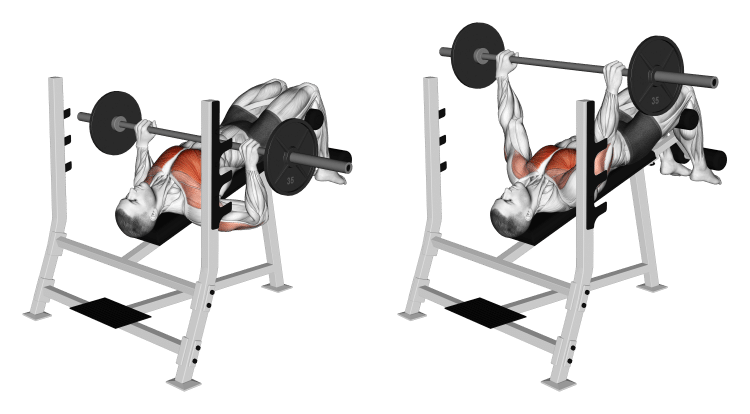
The decline bench press is often viewed as a poor relative of the flat bench press. It’s nowhere near as popular as flat and incline bench presses, but still has value. In fact, for some lifters, it may be the solution to their bench-press-related shoulder pain.
Interestingly, if you watch some top powerlifters bench pressing, you’ll see they actually adopt such a large arch that they’re basically doing decline presses. So, clearly, writing off decline bench presses as useless would be a mistake.
Are decline bench presses the right exercise for you? Keep reading to find out!
How to Do the Decline Bench Press
Maximize the benefits of decline bench presses by doing them correctly. Here are step-by-step instructions for a safe and effective decline bench press workout:
- Position yourself on the decline bench so your eyes are directly under the barbell. Your head should be lower than your hips.
- Reach up and grasp the bar with a grip slightly wider than shoulder-width, ensuring your forearms will be vertical when the bar is at the lowest point of the movement.
- Engage your upper back by retracting your shoulder blades and pressing your glutes and upper back into the bench.
- Carefully lift the bar off the rack and hold it directly above your lower chest or upper abdomen. This will be your starting and ending point for each repetition.
- Take a deep breath in, bracing your core, and lower the bar in a controlled manner towards the lower part of your chest.
- As the bar approaches your chest, keep your elbows slightly tucked in to protect your shoulders.
- Lightly touch the bar to your chest.
- Explosively press the bar back up to the starting position, fully extending your arms and exhaling at the top.
- Reset your breath and core and prepare for the next repetition.
Pro Tips
- Anchor your legs securely to avoid sliding up the bench.
- Experiment with grip width to find what feels best for you. However, while a wider grip may increase chest engagement, it could also be harder on your shoulders.
- Maintain a slight arch in your lower back, but avoid excessive arching.
- If you experience wrist discomfort, consider using wrist wraps for added support.
- Always have a spotter or set the safety bars just above chest height for added security.
Muscle Activation
Research indicates that the decline bench press primarily focuses on the sternal and costal heads of the pectoralis major, with less activation of the clavicular head and anterior deltoids compared to the flat and incline bench press (1). The triceps brachii are also highly activated, similar to the flat bench press. This makes the decline bench press an excellent choice for targeting the lower regions of the chest while still engaging the triceps effectively.
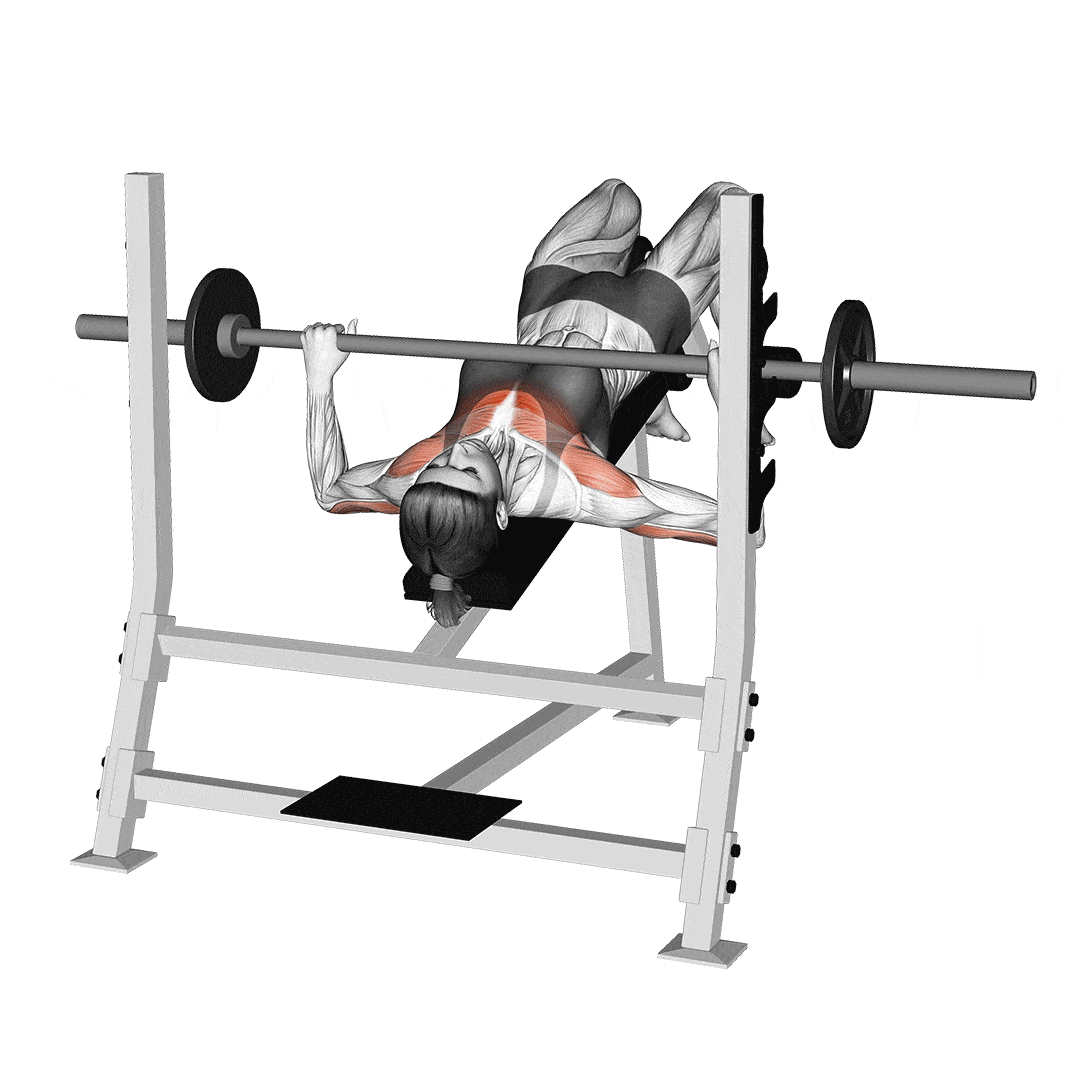
Advantages
Less shoulder strain – many lifters find that decline bench presses are much more shoulder-friendly than flat and incline presses. The range of motion is typically smaller, and the upper arms are in a biomechanically more forgiving position.
So, suppose flat and incline bench presses bother your shoulders, and you are not alone in this. In that case, decline presses may be a viable alternative.
Lift more weight – the decline angle and reduced range of motion mean that most people can decline bench press more weight than they can lift in flat and incline bench presses. As such, this is an excellent exercise for building strength and helps explain why some powerlifters use such a large arch during competition.
Target your lower pecs – while flat bench presses involve your lower pecs, decline bench presses hit them harder. If you want to develop a shelf-like chest, squaring off the bottom of your pecs, the decline bench press could help.
Drawbacks
Blood rush/dizziness – decline bench presses can force a lot of blood into your upper body and head. This may lead to feeling dizzy or faint when you stand back up. This problem will be compounded if you hold your breath or strain to complete your reps. As such, the decline bench press may be unsuitable for people with circulatory issues, such as hypertension.
Overdeveloped lower pecs – well-developed lower pecs can add a lot to your physique. Still, overdeveloped lower pecs can look decidedly “boob-like.” Needless to say, this is not a good look for most men.
Less deltoid engagement – while this is not a big drawback, it will mean you may have to pay more attention to your shoulders as they won’t be getting such a significant indirect workout.
Decline Bench Press Alternatives
There are several exercises you can do instead of decline bench presses that are equally good for developing your lower chest and triceps. These include:
- Cable crossover (high to low)
- Decline dumbbell fly
- Decline dumbbell press
- Decline machine press
- Decline Smith machine press
- Hip bridge floor press
- Machine dip
- Parallel bar dips
Summary
The decline bench press is a valuable but often overlooked exercise that targets the lower regions of the chest. It offers the advantages of less shoulder strain and the ability to lift heavier weights, making it a strong contender for those looking to diversify their chest workouts.
However, it comes with a couple of notable drawbacks, such as the potential for dizziness and overdevelopment of the lower pecs. But, with proper technique and a balanced workout routine, the decline bench press can be an effective addition to your strength and hypertrophy training.
Choosing the Right Variation for You
So, which bench press variation is best for your goals? Let’s explore some common training scenarios so you can determine the best option for you.
Improved Body Composition
Body composition is the relationship between your body fat and fat-free mass. It’s typically expressed as your body fat percentage. Achieving better body composition, e.g., 12-15% body fat, invariably involves losing adipose tissue while maintaining or gaining muscle mass. This will have a significant impact on how you look, i.e., leaner and more muscular and defined.
With this in mind, any bench press variation can help you achieve better body composition. All three exercises are similarly effective for building muscle. Use your preferred exercise to develop your chest while adjusting your diet to facilitate fat loss.
However, remember that the bench press is just one of the exercises you need to include in a balanced workout program, and you also need to train your legs, back, shoulders, arms, and core. Focusing exclusively on your chest will lead to muscular imbalances.
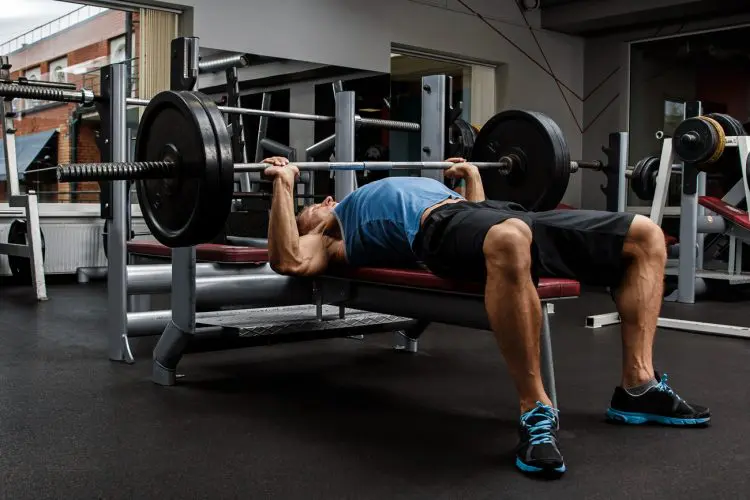
Strength Goals
The best bench press exercise for strength is probably the flat bench press. That’s because it’s a standard measure of strength and the version performed during powerlifting meets. The decline bench press comes a close second as it works well with heavier weights. However, the incline bench press is still a useful strength-building exercise and useful for targeting the upper pecs.
Hypertrophy Goals
While a lot of lifters are quick to adopt the flat barbell bench press as their go-to chest builder, that’s not always the best option. Depending on genetic factors such as limb length and chest depth, the flat bench press may not be the chest builder it’s cracked up to be.
If you respond well to the flat bench press, you should continue doing it. But, if you are unhappy with your results, the incline bench press may be more effective, as the increased range of motion and joint angle may be better for triggering muscle growth.
However, you should also consider the part of your chest that you want to emphasize, i.e.:
- Flat bench press: Mid and lower chest
- Incline bench press: Upper chest
- Decline bench press: Lower chest
You may even need to pick multiple exercises to develop your chest from all angles.
Sport-Specific Training
Athletes should choose the bench press that best matches the biomechanics of their chosen sport. For example, a shot putter primarily generates force at a slightly upward angle, so they will probably benefit most from incline bench presses. In contrast, a boxer tends to push out horizontally, so flat bench presses are arguably the best choice.
So, analyze the movements of your sport and adopt the bench press variation that best matches your biomechanical needs.
General Fitness and Strength Training
General exercises probably don’t need to get bogged down in the minutia of the different bench press variations. Such hyper-specificity is not necessary for developing all-around fitness and strength.
As such, if you don’t have specific strength or muscle-building goals, you should use the bench press variation that you enjoy and the lowest risk of injury. Alternatively, you can use flat, incline, and decline bench presses in rotation so that your workouts never become boring.
FAQ’s
Do you have questions about flat vs. incline vs. decline bench presses or chest training in general? No problem, because we’ve got the answers!
1. What are the primary differences between flat, incline, and decline bench presses?
The main difference between flat, incline, and decline bench presses is the angle of your upper arm relative to your body. Flat bench presses put your arms at a horizontal angle. In contrast, incline bench presses involve pushing upward, and decline bench presses involve pushing downward. This affects how much work the agonists and synergist muscles have to do.
Here is a handy table explaining how muscle engagement differs between bench press variations.
| Muscle Group / Bench Press Type | Flat Bench Press | Incline Bench Press | Decline Bench Press |
| Clavicular Head (Upper Chest) | Moderate activation | High activation | Low activation |
| Sternal Head (Mid-Chest) | High activation | Moderate activation | High activation |
| Costal Head (Lower Chest) | High activation | Low activation | Moderate activation |
| Anterior Deltoids | Moderate activation | High activation | Low activation |
2. What are some safety tips to consider while bench pressing?
The bench press is one of those exercises that, when it goes wrong, it goes really wrong. Lifters are sometimes hurt doing bench presses and occasionally killed, as a failed rep can leave you pinned under a heavy barbell with no means of escape. The bench press can also cause chronic issues when performed incorrectly or too often.
Avoid short and long-term problems by adhering to these bench press safety tips:
- Always use a spotter or power rack.
- Avoid locking out elbows fully at the top.
- Consider using wrist wraps for added support.
- Don’t bench press alone in an empty gym, e.g., at home.
- Don’t bounce the bar off your chest.
- Don’t ego lift, making sure you always stay within your capabilities.
- Keep feet flat for stability, and avoid lifting them.
- Keep wrists straight to avoid strain.
- Maintain a slight arch in your lower back, but avoid excessive arching.
- Make sure the bar is evenly loaded.
- Secure weight plates with collars.
These tips should help ensure a safer and more effective bench press experience.
3. What are some common mistakes to avoid while performing bench presses?
Bench presses should be safe and effective, but that’s not always the case. Avoid common bench press problems by avoiding these common mistakes:
Bench pressing too often – even top benchers only do this exercise 2-3 times a week. As an amateur, you should limit your bench press workouts to twice a week, preferably using different variations for each workout.
Lowering the bar too fast – while we often call strength training weight lifting, weight lowering is also important. Always lower the bar to your chest under control to avoid leaving gains in the gym.
Stop bouncing the bar off your chest – do we even have to tell you why this is a bad idea?! Not only do you run the risk of cracking your sternum, but it also takes some of the work away from your muscles, making your workout less effective. So, pause with the bar on your chest, and don’t bounce it off.
Putting too much attention on the bench press – unless you are a powerlifter, there is no need to prioritize the bench press above other exercises. It’s just one tool you can use to build a bigger, more muscular chest. So, while it’s okay to love the bench press, there is no need to marry it.
Not balancing pushing with pulling – too much benching and not enough upper back training can hurt your shoulders and destroy your posture. It can also hurt your bench press performance. Avoid all these issues by doping as much pulling as you do pushing. In other words, for every set of chest training you do, also do a set for your back.
4. Are there any alternatives to bench pressing for chest development?
As good as the bench press is, there is no need to make it your only chest exercise. In fact, there are a great many additional movements you can use to build and sculpt the chest of your dreams. So, the next time the bench press station is busy, choose one of these exercises instead:
| Dumbbell chest press | Push-ups | Landmine press |
| Machine chest press | Floor press | Resistance band chest press |
| Smith machine bench press | Close-grip bench press | Kettlebell floor press |
| Cable crossovers | Diamond push-ups | TRX chest press |
| Pec deck machine | Svend press | Plate press |
| Dips | Medicine ball push-ups | Hex press |
| Single-arm dumbbell press | Bodyweight fly | Plyometric push-ups |
| Paused bench press | Plyometric push-ups | Cable chest press |
| Hammer chest press | Stability ball push-ups | Dumbbell pullover |
5. How often should I incorporate bench presses into my workout routine?
Most exercisers should work each major muscle group 1-2 times a week, with twice being optimal. This provides a good balance between training and recovery. This means you can bench press up to twice a week.
However, doing the same exercise every time you work out may not be ideal, and incorporating more variety may be better. For example, you may want to alternate between two different chest workouts to avoid boredom and overuse injuries while maximizing your progress. For example:
| Workout One | Workout Two | |||
| Exercise | Sets/Reps | Exercise | Sets/Reps | |
| Bench press | 4 x 6-8 | Dumbbell bench press | 4 x 6-8 | |
| Incline dumbbell bench press | 3 x 8-12 | Incline bench press | 3 x 8-12 | |
| Decline bench press | 3 x 8-12 | Dips | 3 x 8-12 | |
| Pec deck | 3 x 12-15 | Dumbbell fly | 3 x 12-15 | |
6. Are dumbbell bench presses as effective as barbell bench presses?
While purists often prefer the barbell bench press, the dumbbell version offers several notable advantages. These include:
- Increased range of motion – with no bar to hit your chest, you can lower the weights further and get a bigger stretch in your pecs.
- Fewer safety issues – can’t finish a rep? Just drop the weights out to the side!
- Easier on the shoulders – your arms can move independently and in a range of motion that best suits your joint mechanics.
- More balance required – you’ll need to balance and stabilize two independent weights, making the dumbbell variation more functional than barbell bench presses.
- More accessible for home workouts – bench press stations are large and expensive, as are Olympic barbells and weights. Dumbbells and adjustable benches are far cheaper and more compact, so they’re potentially better for home training.
On the downside, getting heavy dumbbells into position at the start of your set can be tricky, and if you want to train for powerlifting, dumbbell bench presses need to be relegated to your accessory workouts; you need to work that barbell bench press hard and often.
So, are dumbbell bench presses as effective as barbell bench presses? They can be! However, you need to match your exercises with your training goals, which means sometimes the barbell is best.
7. What is the best rep range for bench presses?
When it comes to building sheer strength, lower rep ranges of 1-5 with heavy weights (85% or more of your one-repetition maximum or 1RM) are your go-to strategy. This will maximize neural adaptations and muscle fiber recruitment, setting you up for peak performance in terms of raw power.
However, if hypertrophy, or muscle growth, is your primary objective, the rep range can be much more flexible. You can effectively build muscle with a wide range of reps, anywhere from 6 to 30+, provided you’re training to within 1-3 reps of failure. This ensures that you’re recruiting as many muscle fibers as possible, leading to muscle fatigue and subsequent growth.
That said, the traditional hypertrophy rep range of 6-15 is often considered the most time-efficient. Why? Because while higher rep ranges can still induce muscle growth, they often do so at the expense of time. Longer sets simply delay the point of muscle fatigue without necessarily offering additional benefits in terms of muscle growth. However, if you are limited to bodyweight exercises like push-ups and dips, higher reps could be your only option. The good news is that you can still build muscle this way.
So, in summary, if you’re looking to maximize your time and efficiency in the gym while still making those muscle gains, sticking to the 6-15 rep range is a solid choice. But remember, the key is to train close to failure, regardless of your rep range.
Closing Thoughts
In the battle of the bench presses, there is no clear winner. Flat, incline, and decline variations all have strengths and weaknesses and pros and cons, so it’s a matter of choosing the best exercise for your goals.
Incline bench presses are arguably the hardest of the three, feature the largest range of motion, but mainly work your upper chest. Decline bench presses emphasize your lower chest, and the shorter range of motion is stronger and more shoulder-friendly. Flat bench presses fall somewhere between these two exercises.
Regardless of which one you choose, make sure that safety is your priority. Even one more bench press-related accident or death is too many. Use a power rack or a spotter, and never barbell bench press alone; solo trainers should stick to dumbbells.
Finally, remember that the bench press is just one of many chest exercises, and you don’t have to do it if you don’t want to. There are lots of other ways to build the pecs of your dreams. Bench pressing is not compulsory!
Meet the Team Behind This Article:
Patrick Dale wears many hats at Fitness Volt: our Training Editor, a former Marine, and the brains behind “No Gym? No Problem!”. He’s got a lifetime of fitness stories and wisdom to share.
Tom Miller isn’t just another name on our roster. With a title like Certified Strength and Conditioning Specialist (CSCS) and articles sprinkled across top publications, he’s the guy we trust to dot our i’s and cross our t’s.
Together, they ensure our content is genuine, informed, and just right for our readers.
References
1 – Lauver JD, Cayot TE, Scheuermann BW. Influence of bench angle on upper extremity muscular activation during bench press exercise. Eur J Sport Sci. 2016;16(3):309-16. doi: 10.1080/17461391.2015.1022605. Epub 2015 Mar 23. PMID: 25799093.
Interested in measuring your progress? Check out our strength standards for Bench Press, Push Ups, Dumbbell Pullover, and more.

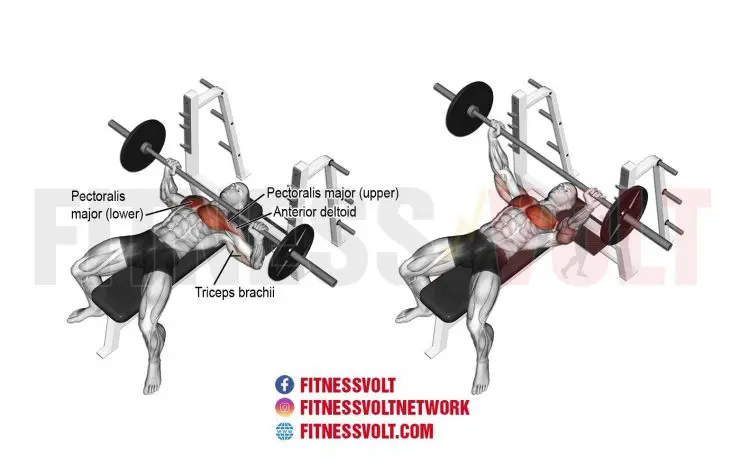

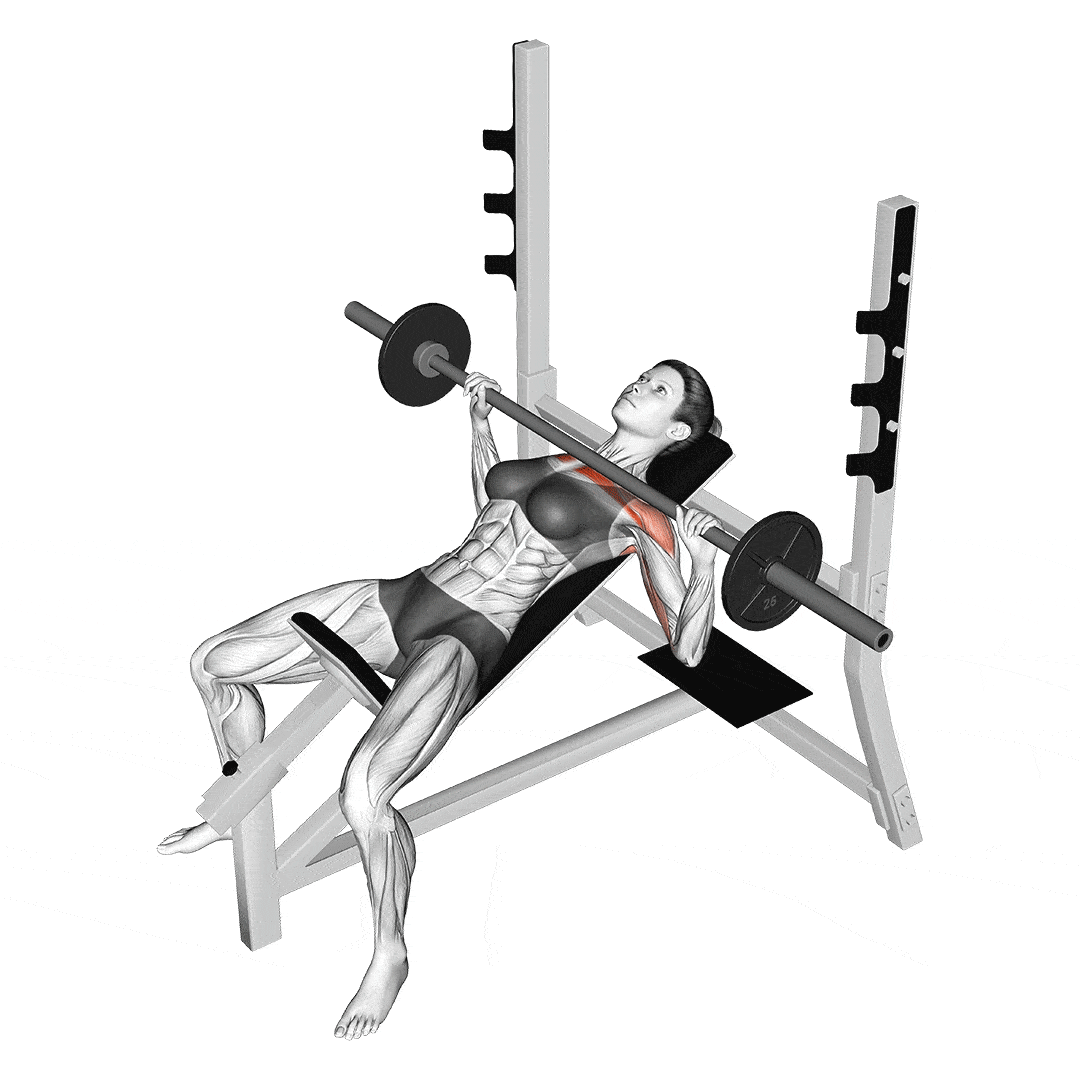




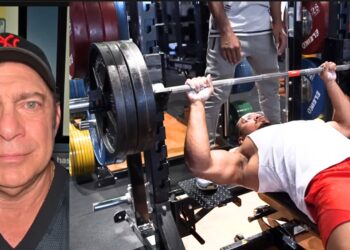
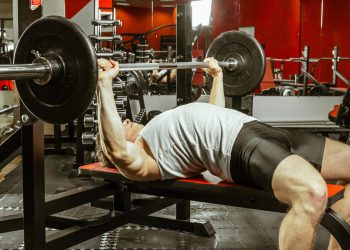


Thanks for article
You’re welcome – I hope you found it useful!